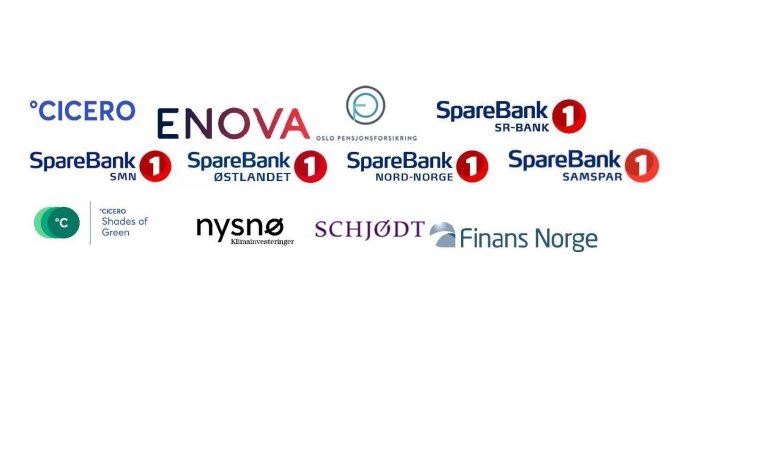Foto: unsplash
CICERO with new climate assessments of six key Norwegian sectors
CICERO’s new sector briefs cover the most important aspects of climate risk and impact to investors and lenders. The climate risk assessments of agriculture, aluminium, aquaculture, land transport, real estate and shipping have been developed in partnership with CICERO Shades of Green and leading Norwegian financial institutions.
The sector briefs are developed to support capacity building on climate risk in financial institutions. The briefs summarize the climate impact, climate risks and climate-related regulation relevant for each sector. They also provide key analyst questions that are important to consider in order to understand the climate risk of companies in the sector.
The briefs cover:
-
Key physical and transition risks for the sector
-
Emission sources by scope, the potential and challenges to reducing emissions and reduction targets
-
The current state of climate risk management, key opportunities and pitfalls for the sector
-
Disclosure and integration of climate risk, including the state of TCFD disclosure
-
Relevant local policies and a summary of EU taxonomy criteria
-
CICERO Shades of Green & analyst perspective, as well as current best practices
-
Historical data were available, including potential data sources and challenges in attaining or using the existing data
-
Potential indicators and metrics that could improve climate risk disclosure
-
Key analyst questions to better understand climate risk, impact and risk management
The sector briefs were developed in the ‘Sustainable Edge’ project. The project has also developed a methodology for assessing the climate risk of companies. The analysis methodology is rooted in CICERO’s climate science and builds on CICERO Shades of Green’s methodology for green bond frameworks.
The Sustainable Edge project is financed by ENOVA SF and financial sector partners: Oslo Pensjonsforsikring, CICERO Shades of Green AS, Nysnø, Sparebank 1 SMN, Sparebank 1 Nord-Norge, SR-Bank, Samspar and Sparebank 1 Østlandet. Finans Norge and Schjødt has also participated in the project.
Norway is the world’s largest producer of farmed salmon. The carbon footprint of farmed salmon is substantially lower than that of beef, but higher than that of poultry. The majority of salmon’s carbon footprint arises in the production of inputs (mainly soy) for salmon feed. In addition, aquaculture causes a range of local environmental problems in Norwegian fjords.DOWNLOAD.
Aluminium production is a necessary sector in the low carbon future. Aluminium does not corrode and can reduce weight when replacing heavier metals, potentially improving energy efficiency and electrification in some industries. The single largest source of emissions in the production is electricity use. Today, a large proportion of the energy generation relies on fossil fuel and shifting towards renewables has vast potential for emissions reductions. Aluminium can be recycled, and aluminium produced through recycling emits only a fraction of the emissions from primary production. DOWNLOAD.
The real estate sector is already facing climate risks, and these are expected to increase in severity over time. The key emission sources from buildings are construction, energy use during operations and demolition. In Norway, direct emissions of greenhouse gases from heating and cooling during operations are lower than in other regions due to the high level of renewable energy in the grid and the prevalence of electric heating. The indirect emissions related to production and transport of materials and waste handling related to construction and refurbishment of buildings are therefore important considerations. DOWNLOAD.
The agricultural sector can contribute significantly to the transition to a low carbon economy, primarily by reducing emissions of greenhouse gases other than co₂ (such as methane), maintaining carbon sinks, and increasing sequestration. Establishing detailed emission benchmarks is difficult due to lack of data and large variations in emission intensity and mitigation potential at the farm level. Meat and dairy production are far more emission intensive than other types of production. It is likely that there will be substantial changes in the demand for food driven by both policies and norms. DOWNLOAD.
Emissions from shipping accounts for 3 percent of global greenhouse gas emissions and have increased in recent years. Zero-emissions technologies are available only for short distances and small ships, while the majority of emissions are from long-distance freight. To reach emission reduction targets set by the International Maritime Organization (IMO), zero-emissions technologies for long distance trade must be developed, as improvements in fuel efficiency will not suffice. For ships built today, there is a significant risk of lock-in to fuels that are likely to become uncompetitive during the ship’s lifetime. DOWNLOAD.
In 2019, emissions from road transport constituted almost 17 % of total Norwegian emissions. Electric vehicle uptake is expected to grow exponentially for light distribution vehicles, while hydrogen and advanced biofuels could be good solutions for heavy-duty trucks and inter-urban passenger buses. Expected major drivers in the decarbonisation of this sector include technology focused measures such as improving energy efficiency and fuel switching, as well as structural changes that avoid or shift transport activity.DOWNLOAD.

